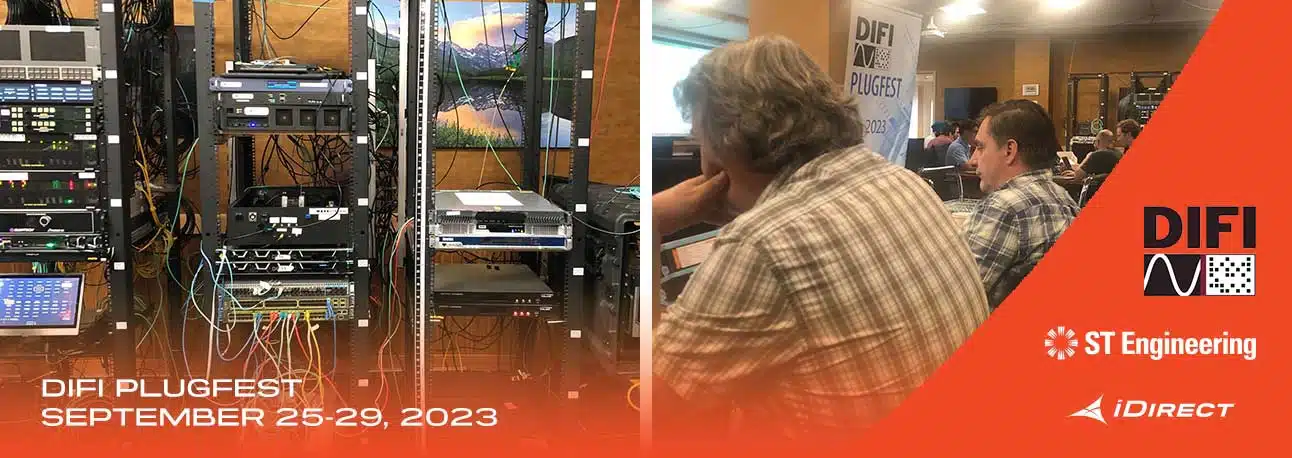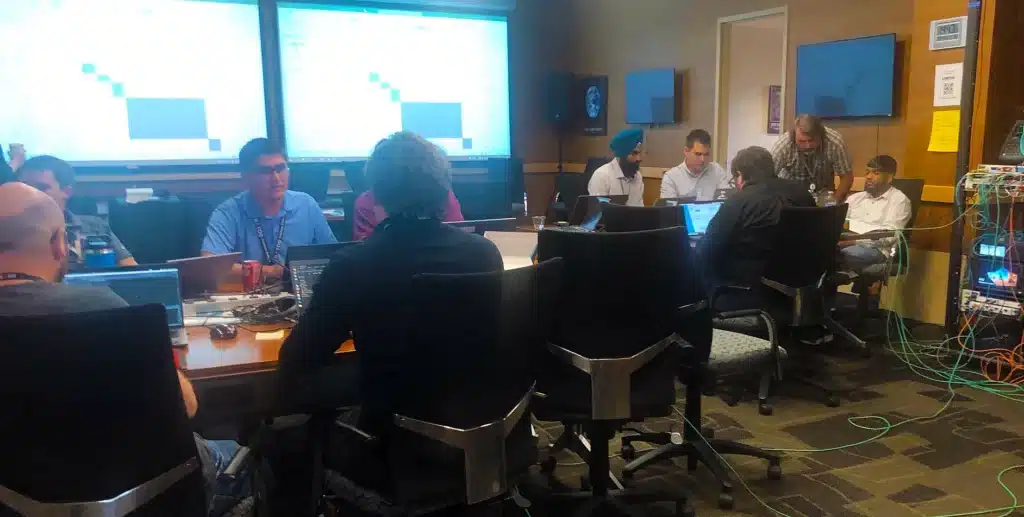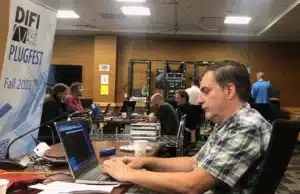We’ve spent two days in Colorado this week with fellow DIFI members taking part in an interoperability and networking plugfest. The event was held to help gain a better understanding of DIFI compliance and interoperability across the consortium members. Plugfests enable equipment manufacturers to test devices for interoperability with emerging standards by physically connecting them. Simply put, if the standard is compliant, then the devices should work when connected.
As you may know from previous blogs, we have been highly involved with the development of the DIFI v1.1 standard that supports the digitization of the interface between modem and RF components. By leveraging this new open standard, the industry will be able to utilize the latest virtualization, cloud computing and network function virtualization technologies as well as greatly improve the performance and scale of satellite hub, gateway, and modem equipment.
Why is this open standard needed?
There are fundamental changes happening within the satellite industry brought about by the advent of multi-orbit constellations, 5G and demand for cloud-based services. This is a complex step change that will see the industry move from traditional analog to IP, away from hardware and towards software-based functions. This transformation will open up broad avenues of opportunity for the industry, enabling access cloud capabilities that will enable satellite operators to maximize their strategic investments.
Through cloud-based services, satellite operators can build out large scale networks in less time and with less capex investment. Through virtualization of the ground segment there can be greater orchestration of service delivery with network resources and business systems. If this is built upon shared networking standards, It will transform the economics and engagement models of satellite operators and major network operators so they can expand the accessibility of satellite communication across the world. This will enable operators to offer advanced services that will provide customers, not only satellite connectivity, but also cybersecurity, hybrid network, application-based QoS, and end-to-end service orchestration.
 The Setup and Interoperability Testing
The Setup and Interoperability Testing
Over the course of the two days there were five different test scenarios that were executed to test interoperability between participants.
The goal was to see if each participating company could transmit and receive streams of traffic from the other companies across these different profiles. So, the scenarios varied from low to high throughput with different sample rates and bit rates being utilized in the tests.
The iDirect setup tested the DIFI v1.1 standard by using a digital modulator that outputs a DIFI-compliant signal that was distributed out to the other participants where they received the signal and converted it into an L-band RF analog signal.
Additionally, we distributed out an L-band signal that was converted to a DIFI signal by the various participants. We would then receive their digital signal and convert it back to analog and output the I/Q constellation of the signal as proof that the transmitted digital signal had been reconstructed by the receiver.
The result of the two day plugfest showed very positive progress by all participants in terms of converting analog to digital and digital to analog while transmitting and receiving the signals across many different devices.
Fostering collaboration
The task of developing and promoting an open standard for the industry is a complex one and it won’t happen overnight. It takes hard work, dedication and teamwork from many different areas of the ecosystem to bring about important changes that will open the door on a world of opportunity for our customers.
At ST Engineering iDirect, we are committed to standards-based innovation and industry collaboration that will eventually lead to the goal of interoperability.


 The Setup and Interoperability Testing
The Setup and Interoperability Testing